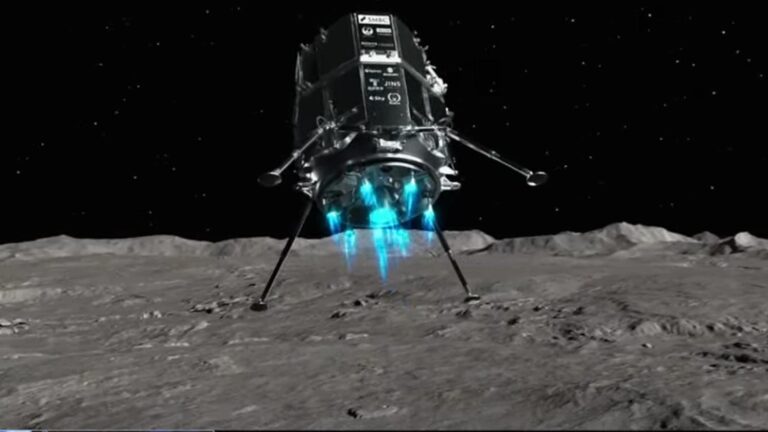Japanese private space company ispace has experienced a setback in its ambitious lunar exploration efforts, as its second attempt to land on the Moon ended in failure. The company’s spacecraft lost communication and crashed during the final stages of descent, marking a significant blow to Japan’s growing presence in the commercial space sector. This mission was part of ispace’s broader strategy to establish a foothold in lunar operations and advance Japan’s role in space exploration.
Japan’s ispace Faces Setback in Ambitious Lunar Exploration Efforts
Japan’s private aerospace firm, ispace, encountered a major obstacle when its latest attempt to land on the Moon did not go as planned. The mission, a crucial part of Japan’s expanding ambitions in lunar exploration, was intended to demonstrate advanced technologies and establish groundwork for future robotic and crewed missions. However, technical challenges during the final descent phase led to the spacecraft’s failure to achieve a soft landing. This marks the second consecutive mission setback for ispace, raising questions about the timeline and viability of its lunar objectives.
Despite the disappointment, ispace remains committed to learning from the setback and continuing their push towards a sustainable lunar presence. Key points emerging from the mission include:
- Communication Loss: Contact with the lander was lost moments before touchdown, preventing any real-time intervention.
- Landing System Flaws: Early analysis points to potential malfunctions in the navigation and propulsion systems.
- Future Plans: ispace has already announced intentions to launch a third mission with enhanced technology and collaboration with international partners.
| Mission Aspect | Outcome | Next Steps |
|---|---|---|
| Launch | Successful | Maintain current vehicle design |
| Landing Attempt | Failed soft landing | Redesign landing system |
| Data Transmission | Lost during descent | Improve communication redundancy |
Technical Challenges and Mission Failures Impact Future Lunar Plans
Japan’s ispace faced a significant setback after the failure of their second lunar landing attempt, a blow that has echoed across the global space community. The mission, which aimed to demonstrate advanced soft-landing technologies on the Moon’s surface, encountered unexpected technical malfunctions during the descent phase. Critical navigation system errors combined with propulsion anomalies led to a loss of control, ultimately preventing a safe touchdown. This incident not only underscores the inherent risks of lunar missions but also raises pressing questions about the robustness of current spacecraft design and testing protocols in private-sector space ventures.
Such failures carry far-reaching implications for upcoming lunar exploration plans, both public and private. Stakeholders are now prompted to reassess timelines and budget allocations, focusing on the following areas to enhance mission reliability:
- Improved fault detection and recovery systems to mitigate in-flight anomalies
- Enhanced simulation and validation procedures replicating lunar conditions more accurately
- Collaborative international oversight to share best practices and lessons learned
| Aspect | Issue Encountered | Proposed Improvement |
|---|---|---|
| Navigation | Erratic sensor data | Redundant sensor integration |
| Propulsion | Thrust inconsistencies | Enhanced engine diagnostics |
| Software | Delayed command execution | Real-time performance monitoring |
Experts Call for Enhanced Testing and International Collaboration to Ensure Success
Following ispace’s recent setback in its second lunar landing attempt, industry experts emphasize the critical need for a more rigorous testing framework. They argue that comprehensive pre-launch simulations and incremental trial phases could dramatically reduce the risk of mission failure. Key recommendations include:
- Enhanced system diagnostics: Implementing advanced fault detection algorithms to proactively identify anomalies.
- Redundancy protocols: Developing backup systems to safeguard against single-point failures.
- Extended ground simulations: Conducting longer and more varied test scenarios reflecting realistic lunar conditions.
Moreover, international collaboration is viewed as indispensable for advancing lunar exploration efforts. Pooling global expertise and resources can lead to innovative solutions that individual programs might not achieve alone. A proposed framework for cooperation includes:
| Collaboration Aspect | Potential Benefit |
|---|---|
| Shared Data Platforms | Accelerates problem-solving through real-time information exchange |
| Joint Research Initiatives | Enhances technology development by combining expertise |
| Coordinated Launch Scheduling | Optimizes resource allocation and mission timing |
Concluding Remarks
Despite the setback of ispace’s second lunar landing attempt, Japan’s commitment to advancing space exploration remains strong. The mission’s challenges highlight the complexities of lunar operations, underscoring the need for continued innovation and perseverance. As ispace and other stakeholders regroup and analyze the outcomes, the global space community watches closely, anticipating future endeavors that will further humanity’s reach beyond Earth.




